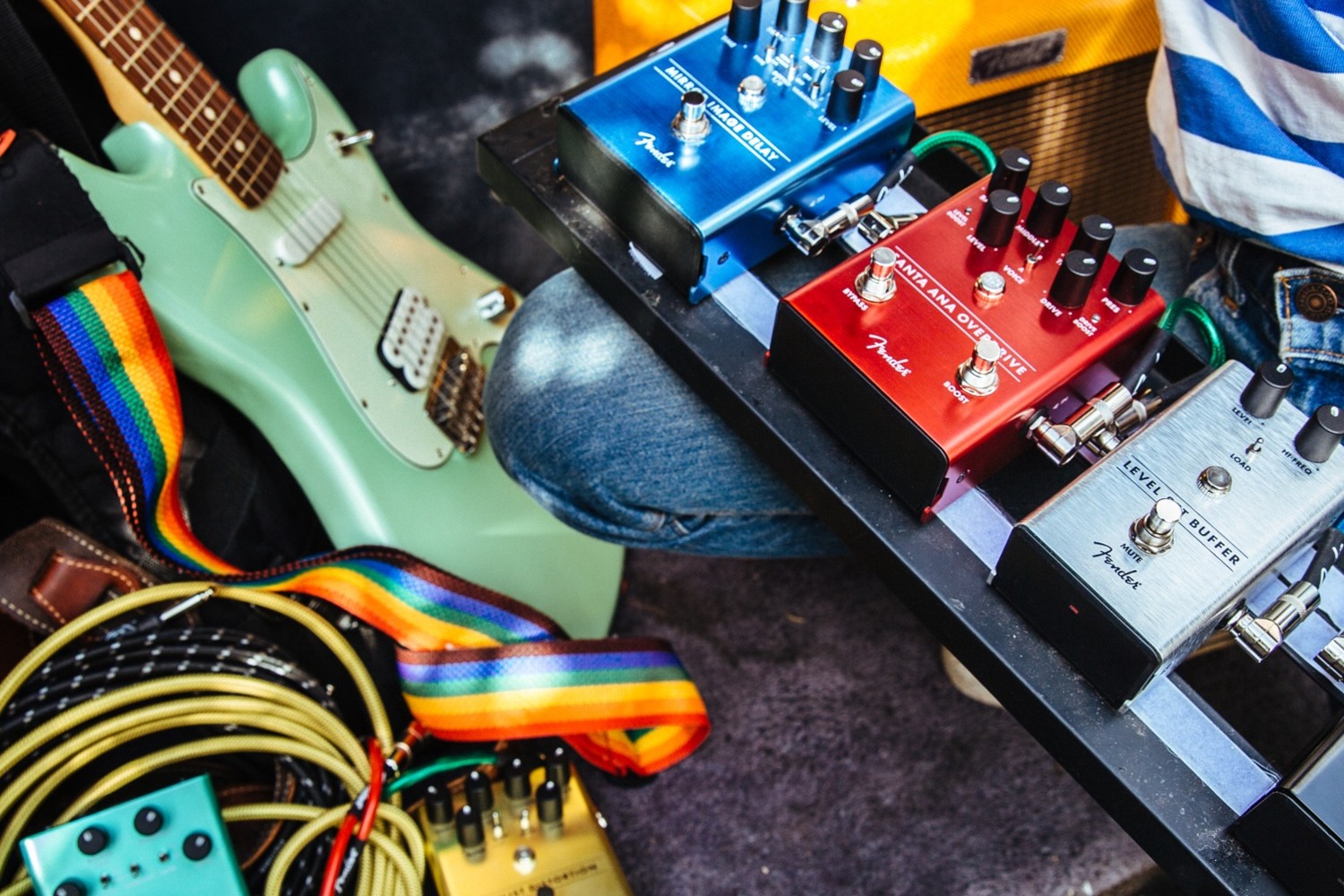Including a run through of Stan Cotey's process.
When Fender decided to launch a new pedal line a few years ago, they knew they needed to do something really unique that lived up to the Fender name and most importantly, gave players some new musical tools to express themselves with.
While there had been previous Fender pedals over the years, the project took on its own identity and has led to a whole range of effects from the Pugilist Distortion to the Marine Layer Reverb and everything in between – including a huge range of modulation pedals. These are pedals designed for today’s guitarists to create the sounds they hear in their head, not reproductions of old designs for you to mimic your favourite old-school tones.
Read up on all the latest interviews, features and columns here.
“Almost all of the pedals in the current Fender effects line are designed by Stan Cotey,” says Riley Giffin, Fender Product Manager for Pedals and Pickups, who comes to Fender after making some pretty significant contributions to both pedals and pickups at Seymour Duncan prior to joining Fender. “There are a couple of other engineers in house that work on pedals as well, but they’re all original designs done by Fender folks, and I think that’s really cool. I think if you’re going to do it, you should want to do it and not just have it to have it. You should have people who are passionate about it and the guys that are designing the pedals are too.”
“The first thing is an idea: what do we want to do?” Giffin says. “And Stan will literally just draw the schematic on a blank sheet of paper. That’s where he starts! He’s like ‘What do you want it to be?’ And he’ll go out to his garage and basically just breadboard a prototype that he can listen to in real time based on his initial drawings. Then people would come over and listen and play through it, maybe make some comments, make some tweaks, and it just develops from there.” Once Cotey has the pedal in a place where he’s feeling good about it, he sends it out to get prototype boards made to further refine and troubleshoot the schematic based on the results and player feedback.
Fender’s modulation pedal line is where you’ll find a lot of innovation. Take for example the Pinwheel Rotary Pedal, “you’ve got the classic rotary stuff with the ramping of speed up and down gradually, you’ve got a foot switch to go from a slow speed to a fast speed or to stop the rotary just like you would have had with a real rotary speaker, and then you have, as well, an envelope follower for expression. And it’s also got an onboard overdrive. A lot of classic rotary speakers would get somewhat overdriven just by the nature of pushing them as hard as you would, so this emulates that very nicely.”
The envelope follower means you can influence the strength of the effect based on your playing dynamics, and it’s not just the Pinwheel that has one. “I think all of the more recent modulation stuff, the Lost Highway Phaser, the Bubbler Chorus, the Pinwheel, they all have options available that you might not find on a basic version of that effect. I think the phaser in particular, I’m rather fond of. Having envelope as well as LFO modulation on that kind of pedal is really cool. It gives players a way to interact more with their effects through their playing dynamics rather than just through setting the knobs.”
“The Tre-Verb is a kind of a no brainer for Fender,” Giffin continues. “It’s the two classic Fender effects in one box: tremolo and reverb. That’s actually a pretty straightforward pedal. You’ve got three controls for each side, you’ve got three modes for each side and you’ve got an on and off foot switch for each effect. And the signal chain can be changed to run the reverb into the trem or vice versa, whichever way you prefer it. So if you don’t have a Fender amp, or you don’t have a Fender amp with these effects on them, well, first of all, why not? But secondly, uh, you can just grab one of these!”
There are a few flavours of Fender tremolo available, including the MTG Tube Tremolo, aided in its warm funky chop by a NOS 6205 preamp tube. “A lot of the old Fender amps have tube-based tremolo and it’s a kind of unique tone that you don’t necessarily get with a modern, clean VCA-style tremolo,” Giffin says. “It’s very warm, very full sounding, kind of vintage-y and that’s what the MTG Tube Tremolo brings, as well as an option to change the waveform shape and tap tempo with divisions. And the divisions are super nice.”
Without giving too much away about Fender’s plans in particular, Giffin has some ideas for where the future of the stompbox is heading in general: “We’ve seen a real explosion of the boutique pedal scene, particularly over the past five years or so. We’ve seen a lot of folks doing really interesting really well-made stuff and pushing the boundaries of what a stompbox is capable of doing. What I’m seeing recently that I’m really excited about is the analog pedals with digital control, stuff like what Chase Bliss is doing, for example. I think that kind of thing, and making pedals that get the classic sounds that you want but give you the flexibility of modellers, that’s something that’s really exciting and I think we’re going to see more of that kind of stuff trickling into the market.”

